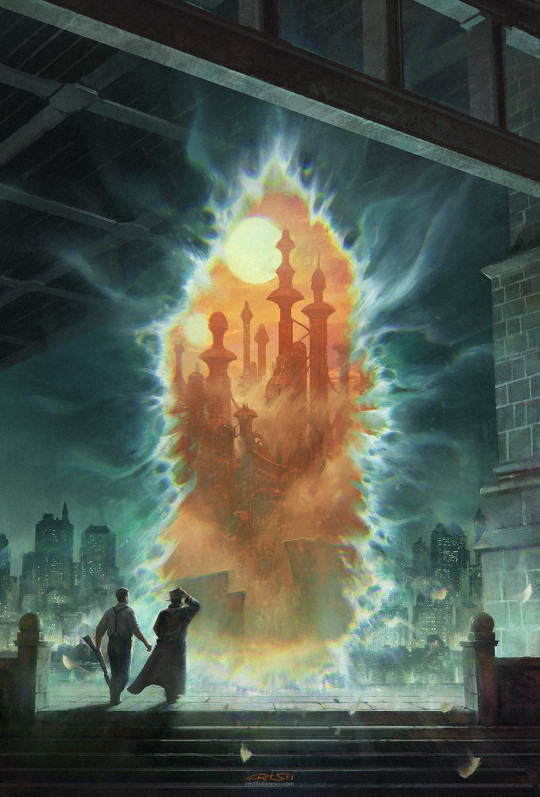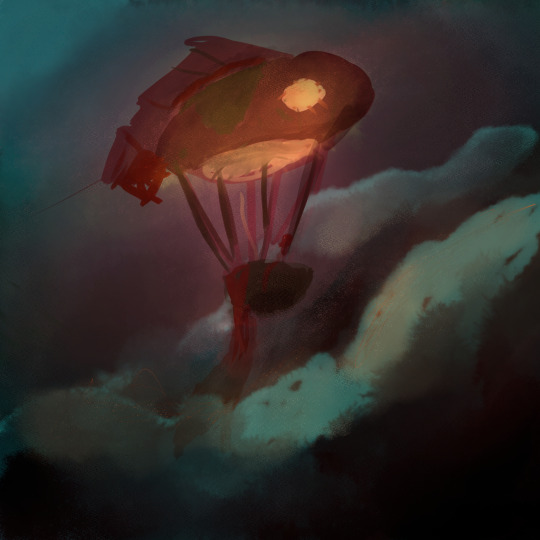Note
Hello ! I don’t know if you did it yet but can you do immortal x mortal prompts ?
Person A is an immortal who has lived for centuries traversing the best and worst events of human history. Person B is a historian who wants to know absolutely everything. Person A has a terrible memory.
Person A is a god. Person B is a priest/priestess.
"How did you become immortal? You're human." "A little bit of this, a little bit of that. Trust me when I say you really don't want to know.
Every word of story was leading to the tragic and inevitable last page. It was always coming. Loving a mortal was painful because that last page was the same for every story. Sometimes they lived a full life, grew into a graceful old age. Sometimes that book was cut short. Death came for everyone. Everyone but BLANK.
#immortal x mortal#deity au#prompts#writing prompt#creative writing prompt#writing#writing prompts#creative writing#writers#dialogue prompt#writing ideas#prompt#dialogue prompts#angst prompt#angst#we all need therapy#i certainly do
55 notes
·
View notes
Video
More Weird Shit I Found in the Woods™.
Geometrically-challenged child cultists should have stuck with the triangles.
279K notes
·
View notes
Text
Prompt 41
It liked to play games.
It was good at them.
We didn’t stand a chance.
#prompts#prompt#writing prompt#writing prompts#writing#write#writers#writers block#creative writing#creative writing prompt#monsters#monster prompt#spooky prompt#horror#horror prompts#horror prompt
68 notes
·
View notes
Text
Prompt 40
The night was so dark even hell had hidden their fires.
#first line#creative writing#writing#writers#write#creative writing prompt#writing prompts#writing prompt#writing inspiration#writing ideas#prompts#prompt#hell
20 notes
·
View notes
Text
Prompt 39
They tried to tell me it was not my fate as if that would stop me. I’ve slain mages, laid waste to armies, beheaded kings and tyrants alike, fought gods and what gods feared. I told her so.
She smiled.
#writing#write#writers#writers block#creative writing#prompts#prompt#writing prompts#writing prompt#creative writing prompt#inspiration#ideas#story ideas#dialogue prompt#fate#destiny#seers#oracles#prediction#prophecy
27 notes
·
View notes
Photo



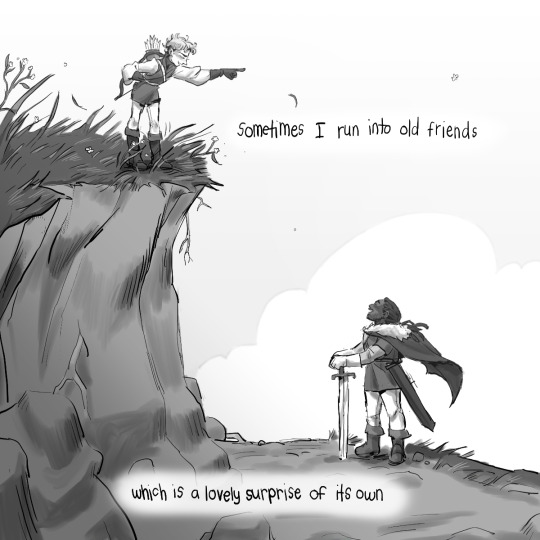



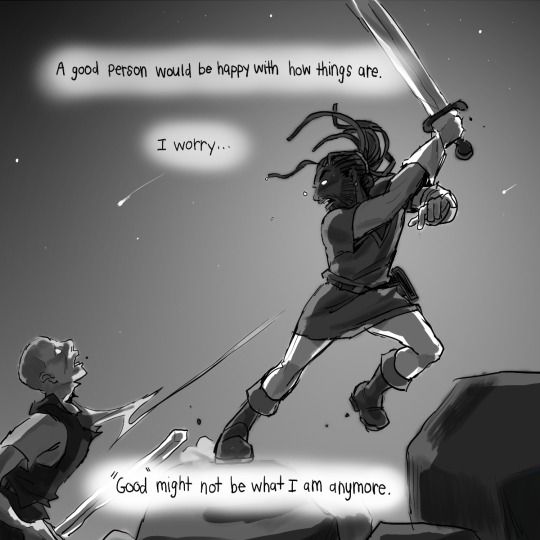

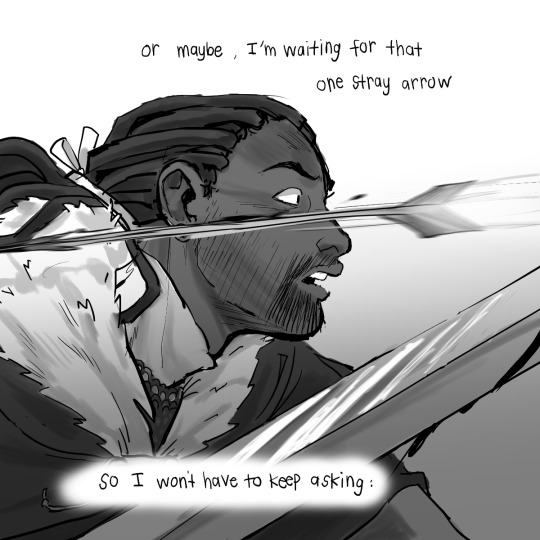
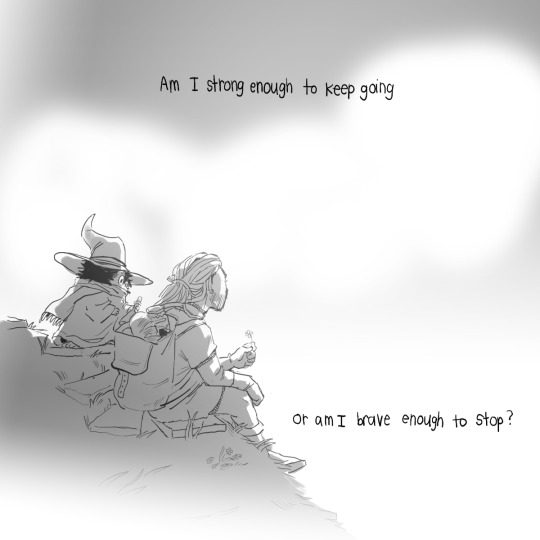
This one hovered around my heart for over a year <3
84K notes
·
View notes
Text
Unimportant but.. for every D&D DMs in my timeline;
Feel free to use my character artworks as tokens for your homebrew NPCs! (I'd refrain using them as Player Characters--since they're already my Player Characters, but NPCs are all good!)
Feel free to use them as you see fit, but do please refrain from editing them and claiming them as your own. You can change their names, their stories, their relations and everything, as long as you credit the art and (preferably) link them back to my social media accounts (@mossygator_)!
I want everyone to have fun and if my artworks could help in translating your games to be fun and enjoyable, then by all means; go ahead!
LINK TO DRIVE (Plus their names if you'd like to keep their names!):
https://drive.google.com/drive/folders/1th8WLAg9C8kLA4uU0eUPT8V6SFPyImzb?usp=sharing



I'm going to constantly update the folder (since I mostly draw my setting's major characters most of the time) so you can always check back for updates and new characters! (If you want something specific, you can always commission me when the slots are open!)
And as always, please read the terms and properly credit me for the artworks. It's all I ask! Have a great day everyone :D
Have fun on your tables, adventurers! - M
1K notes
·
View notes
Text
A vampire being hunted by other vampires has taken shelter in your house. Now, he won’t leave.
118 notes
·
View notes
Text
Mountain Assets for worldbuilding!
Build your own World map!

317 notes
·
View notes
Text
Fantasy creature design prompts
Land creature adapted for flight—don’t just slap wings on an animal and call it a day, think about how the creature’s physiology would change!
Creature adapted to caves/total darkness (no eyes, sensory whiskers, etc)
Imagine that the only creatures with magic in your world are invertebrates. What are some of these creatures? (Bonus points if you don’t use cephalopods, insects or arachnids!)
Deer with Weird Antlers—but what are those weird antlers for? And exactly how weird can antlers get?
An amphibious creature, as comfortable on land as it is in water, with gills, lungs, or both.
A creature that doesn’t belong in a tree, adapted for an arboreal lifestyle.
A large animal, but VERY VERY SMALL. Bonus points if you don’t go for the obvious ones like elephants or whales.
Just, the wildest and most nonsensical possible theory for what Bigfoot actually is.
Symbiotic relationships! What would a symbiotic relationship between a large hoofed mammal and a species of algae be like? A feline and a type of fungus? A rodent and a plant?
A creature that, like an angler fish, becomes fused to its mate.
A creature that is fully aquatic, adapted to live somewhere that isn’t water.
In your setting there is a scummy, nasty pond. What is a good reason not to dip your toes in there?
A creature that is just as dumb as a post. These things are notoriously stupid. What adaptations do they have for survival that allowed them to give up on developing cleverness?
A creature that hides in plain sight. What would a creature adapted to hide a magical mushroom forest look like? A Demon Hellscape? What about in a Fantasy Wal-Mart?
Giant arthropod that’s not a spider, centipede or scorpion.
Domesticated Arthropods that are friendly! What are they used for? Can fuzzy moth fiber be spun into wool?
What sorts of pests or parasites would plague a dragon?
What sorts of predators would a dragon have to worry about?
Creature that relies on senses other than sight, hearing, or smell. What are these senses, and how does it use them?
Bioluminescence! But why is it bioluminescent?
A Varmint. Like a raccoon or opossum, this creature is a pest and it gets into your garbage and it’s SO ANNOYING and there are so many of them!
Eusocial creatures that build large nests or hives, but that aren’t insects. Bonus points if their social order doesn’t revolve around a “Queen.”
A creature that spends much of its life standing very, very still. Why does it do this, and how is it adapted for that kind of lifestyle?
A creature that’s just ENORMOUS. Like HUGELARGE GIGANTIC. Why is it so big?
Imagine a world where humans obtain magic through some kind of parasite. What is it, what what effects does it have? How does it benefit from this relationship?
Imagine a creature whose prey is, specifically, humans. What kinds of adaptations would if have for this?
Creatures that do not reproduce sexually. What do they do instead?
A creature that is commonly ridden. But, what made this creature a better candidate for domestication than any other creatures?
A creature that, like the Creepers in Minecraft, explodes. Why would a creature do this?
A creature that, like a hagfish, can produce massive quantities of slime. What kind of creature is it, and what is the slime for?
A creature that, like a web-spinning spider or ant lion, constructs some sort of trap or snare for its prey. What sort of creature is it, and what sort of trap do they set?
A creature that, like a peacock or bird of paradise, has some incredibly elaborate display structures to attract mates. What are they?
A creature that is very, very, VERY poisonous. What is it? What about its appearance warns predators that it’s not a good option for a meal?
A creature emblematic of courage, like a lion, or of nobility, like an eagle. What qualities would a creature that a ruler or conquerer would like to be compared to have?
A creature where if you’re compared to it, it’s definitely an insult or even a swear word. Why does it have this reputation?
A creature that is nearly as intelligent or as intelligent as a human, but that isn’t “good” or “evil” in a sense that we would understand.
Social creatures where the females are larger or more dominant than the males.
A creature that seems that it would be INCREDIBLY difficult to domesticate, but domesticated. Explain how and why.
Three breeds of the same creature: one used for plowing and pulling heavy things, one used for swift transportation, and one used in war.
Three breeds of the same creature: one used for pit fighting, one used for herding, and one used for hunting.
A domesticated creature that is not being used to ride, pull things, guard things, produce food or fiber, hunt or retrieve, as companions, or any other common reason for domestication—why are they useful or needed?
A creature that, like a cuckoo bird, leaves its young to be cared for by parents of other species. What species does it target, and how?
An extremophile—a creature that is adapted to incredibly harsh and hostile conditions, such as polar ice caps, hydrothermal vents, or active volcanoes. How does it live there?
A creature with a non-standard number of limbs. Explain this adaptation.
Imagine that after human extinction, a different species evolves to fill our niche, developing great intelligence and tool use. What species is it, and how does it adapt?
728 notes
·
View notes
Text
Fantasy Guide to Royal Households and How they Work
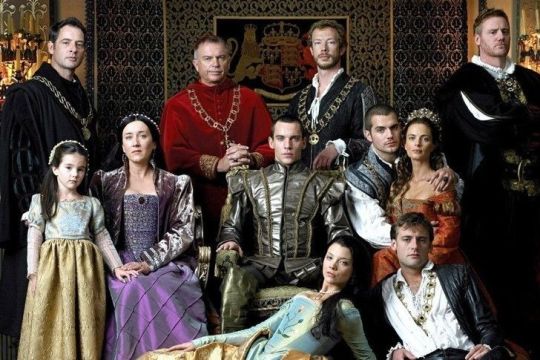
When I say Households, I mean the entourage that follows around the royal family. The household went everywhere with them to care for their needs from the people who would empty their chamber pots to their noble companions. Most royal households are basically the same as noble ones, only on grander scale. Every royal had a household and an entourage as well as every noble at court.
Palace Personnel ~ The Commons
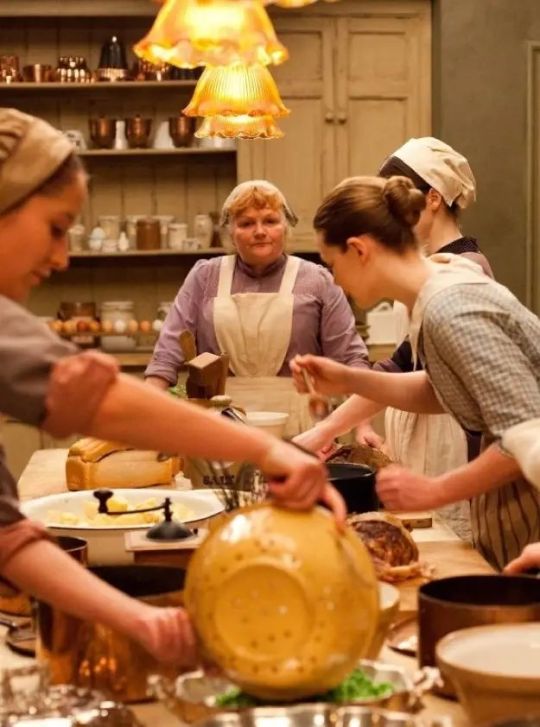
The commons were an intregal part of every household. They made up perhaps 80% of the work force. Royal courts were often on the road and never spent more than a few months at every palace. The court was constantly moving. Some positions were not permanent, meaning certain servants did not travel with the court because they were employed at the palace only. They would be paid by the Monarch's paymaster.
Scullion: The scullion was a relatively easy position to fill so they were often changed as the court went from palace to palace. They would be responsible for scrubbing and cleaning the servants quarters and the kitchens. They would scrub floors with lye, scour pots with sand, sweep put the fireplace and clean up after the other servants. They were the first to rise in a castle and tasked to light all the fires in the kitchens. Scullions would just be employed to the palace and serve a multitude of chambers
Laundress: The laundress was responsible for the cleaning of anything made of fabric in the household. Since they are handling unmentionables, they knew what happened behind closed bedchamber doors. They knew when the King visited the Queen or hadn't, they knew when marriages were consummated or not and they knew when the Queen and royal women were not pregnant. They often sold secrets to pad their pockets. Laundresses might be permanent staff but sometimes not.
Minstrels: The minstrel was a commoner hired to play an instrument or sing for the entertainment of the royal. A royal might staff a few at a time but they would always have one on hand. The minstrel would likely come with their masters as they travelled. The minstrel might serve the main royal household but a royal might retain their own.
Cook: The cook was one of the most important servants in the household. They would have the task of overseeing the running of the kitchens and keeping supplies in order. They would likely be on call at all times. Henry VIII's cook was often woken in the night because his royal master wanted a midnight snack. The cook was a valued member of the household and would have been highly sought after if they were a very skilled cook. They would have travelled with the joint. Cooks were apart of the greater royal household but often royals retained private cooks for their own use.
Maidservant: The maidservant cleans the castle. She would sweep the floors, scrub them, empty the chamberpots, get rid of the ashes from the fire and ready the fire for later. She would make up the bed or strip it for the laundresses. She would wash anything that needed washing including furniture and ornaments. She was likely not a travelling servant and would be strictly employed at a single palace.
Jester: The jester was the hired entertainer. Working under the master of revels, the jester had the daunting task of making the monarch and their family laugh. They would tell jokes, tell stories, cause havoc in the court for laughs and lighten the mood. The most successful jester of all time was Will Somers, jester to Henry VIII. Will broke bad news to the infamously bad tempered monarch and got away with things that would have sent others to the block. Will survived most of Henry's reign, his head intact. Jesters would be apart of the main household though each royal might have one of their own.
Positions within the Royal Household ~ Noble
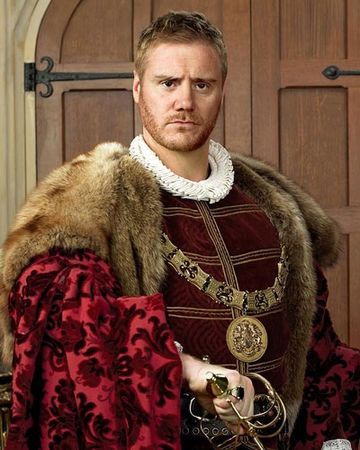
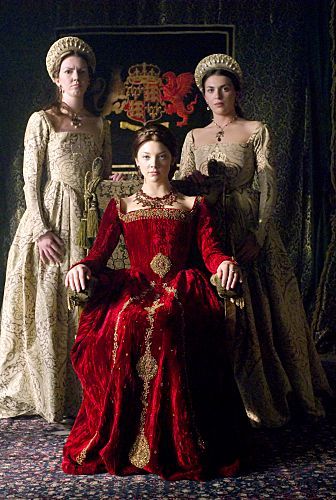
Nobility were always welcomed at court. They eat at court, slept at court and were cared for by the monarch. Some nobles had to sing for their supper and most were hired as royal servants. They weren't exactly scrubbing floors and would be paid handsomely with land that would generate wealth for them
The Steward/Seneschal: This person was the head of the royal's staff. They would have the task of running the lands and servants their master or mistress. The steward served as a backup and assistant in all the tasks even representing their master or mistress when they were unavailable. Would be a high ranking noble. Each royal household would have them.
Treasurer of the Household: The treasurer was the accountant and pay master. They would be in charge of ensuring debts were settled, wages were paid and the household was running within the budget. This was a coveted position because it gave the treasurer insight into the financial situations of the royals. Such info was wroth its weight in gold. Each royal would have one.
Usher: The Gentleman Usher would be in charge of escorting guests into the royal chambers and into the royal presence. They would act as a go between their royal master/mistress and the guest often going back and forth with messages. It was just as coveted as the position of chamberlain but with less responsibilities.
Master of Horse: The Master of Horse was in charge of seeing to the horses of their master. They would oversee the grooms or the stableboy/hands who were employed at the stables to actually care for the horses. The master of horse would ensure that the stables were in order and the horses were up to parr in order to bear royalty across the kingdom. Each royal would have one but there would a main one who acted as overseer.
Master of the Wardrobe/Mistress of the Robes: These are the nobility who are employed to look after the clothes of the royal they serve. This would mainly involve a managerial position, overseeing the inventory of the royal wardrobe (a warehouse like building that housed the clothing) and placing orders for new clothes. It was a tidy job that rarely involved getting the hands dirty. Each royal would have one.
Chamberlain/Valet: The chamberlain is employed to look after the Lord's bedchamber. This was the most sought out position as they effectively were the gateway into the royal presence. Their main task was making sure their boss was comfortable and happy. Could be a well born commoner or a noble. Each royal would have one.
The Page: All royal households had pages. They would be a young noble boy about seven years old sent to their royal master. He would be in charge of tidying up after the lord, carrying messages to other servants and occupants of the castle and serving him at meals. Unlike others on the list, the page would not be paid. His experience was his payment as he would learn the running of a court and how to be courtier. Each royal would have one.
Squires: Squires were like pages though they only served the men. They would accompany their royal master to battle, look after his armour and mail, ensure that his lord's horse was saddled, caring for their master's weapons. The squire would always be a young nobleman on the cusp of becoming a knight.
Governess: The governess is a noblewoman woman employed to oversee the Monarch's children's household. She would be the first teacher a royal child would have and would oversee the nursemaids who would have care of the physical person of the child. She would be appointed when the child was four or five. Notable governesses include Katherine Swynford (wife of John of Gaunt and mother to the Beaufort line), Margaret Pole (wife of Tudor Loyal Sir Richard Pole, sister of the last York heir Edward of Warwick, daughter of George Duke of Clarence and niece to King Edward VI and Richard III), Kat Ashley, Margaret Bryan, Madame de Maintenon and Baroness Lehzen. Most unmarried Princesses retained their governesses while Princes generally outgrew their governesses after they were breeched.
Gentlemen of the Privy Chamber: They were the male companions of a King or Prince, sort of like ladies in waiting but manly. They would accompany the King or Prince everywhere they would go and shared duties with Groom of the Stool (royal toilet paper dispenser) and the Chief Gentleman of the Chamber (overseeing the staff and maintaining the chamber). They would help their master get ready, serve him at the table and organize hunting and games to keep him entertained. Gentlemen and companions where often chosen for their connections as well as their master's own opinion. Henry VIII's gentlemen included: Sir William Compton (ward of Henry VII and heir to rich lands), Sir Henry Norris (the grandson of William Norris who fought with Henry's father at Stroke and a relation to the Yorkists Lovells), Sir Anthony Denny (son of Sir Edmund Denny Baron of the Exchequer) Sir Michael Stanhope (brother in law to Edward Seymour, Duke of Somerset), Charles Brandon (ward of Henry VII and son of Tudor Loyalists)
Ladies in Waiting and Maids in Waiting or Maids of Honour: These are the female attendants to the Queen or Princess. Ladies in Waiting were married while the Maids were unmarried. They would have to attend their mistress wherever she went, help her get ready, keep her chambers in order, write letters for the Queen and maintaining her honour. They were chosen for their connections. Using Katherine of Aragon as an example, her Ladies in Waiting included: Maria de Salinas (daughter of Juan Sancriz de Salinas secretary to Isabella, Princess of Portugal and a Spanish courtier in the service to Katherine's parents, wife of Baron Willoughby de Ersby), Elizabeth Howard (the daughter of Thomas Howard, 2nd Duke of Norfolk, sister to Thomas Howard, 3rd Duke of Norfolk and wife to Thomas Boleyn, ambassador to France), Anne Hastings (daughter of William Hastings, 1st Baron Hastings, wife to George Talbot, Earl of Shrewsbury and Lord Steward.), Agnes Tilney (wife to Thomas Howard, Earl of and 2nd Duke of Norfolk.), Elizabeth Scrope (wife of John de Vere, Earl of Oxford, a loyal Tudor lord), Margaret Scrope (wife of Sir Edmund de la Pole, Earl of Suffolk cousin to the King), Anne Stafford (sister of the Duke of Buckingham, married Sir George Hastings, Earl of Huntington and daughter of Henry Stafford, 2nd Duke of Buckingham (cousin to the King) and Lady Katherine Woodville (sister of King Henry VIII's grandmother and his great aunt by her marriage), Elizabeth Stafford (sister to Anne Stafford wife Robert Radcliffe, Lord Fitzwalter and Earl of Sussex around). Their connections are what got them their places and you can see why they were chosen.
Accommodation
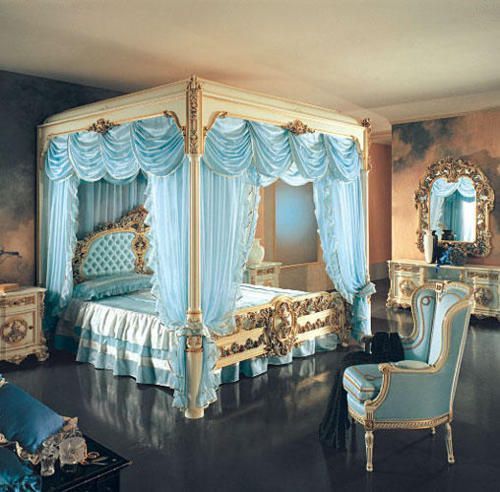
Accommodation can be a difficult thing to sort both as a writer and a steward. You might have a palace of 200+ bedchambers in which you must house a staff of 500-/+, a varying amount of nobles, the royal family (of a varying amount) and their own households. When assigning rooms it is best to think of a Russian nesting doll. Start from the inside and work your way to the outside.
The best rooms go to the monarch, their consort and their children/siblings/parent(s). These chambers would include the bedroom, a drawing room/ common area, a privy, a closet (a small chamber that can be used for prayer or work). They would be furnished with the best cloth, the best candles and whatever furniture brought by the resident since most royal courts travelled from palace to palace. They will also have chambers for their personal servants such as ladies in waiting and grooms.
The second best set of rooms would go to the highest ranking nobles/people in the court. These rooms would be less fancy and a little smaller. These would be given to from titled nobility descending from those of Ducal rank (Dukes/Duchesses) or even members of the council such as Thomas Cromwell in Tudor times.
The next set would be considerably smaller, perhaps minus a closet or a drawing room. Given to lower nobility.
The next level of chambers would be smaller perhaps only the bedroom and a common area given to minor nobles.
The last set of rooms would be small and only hold enough room for a bedroom. Servants would have to sleep on the ground on pallets beside their masters.
Any other guests at court would have to stay at off-site locations around the palace in the city. Some nobles at houses around major palaces just in case they arrived late or were kicked out of court.
16K notes
·
View notes
Text
Fantasy Guide to Palaces and How they Work

I'm always being asked how palaces work whether its downstairs, upstairs or accommodation wise. It is a really difficult thing to explain since there are so many different versions. I thought up a great analogy for it. Treat a palace like a hotel with a whole town living in it, because that's technically what it is. So that's what we're going to do.
Accommodation

Accommodation can be a difficult thing to sort both as a writer and a steward. You might have a palace of 200+ bedchambers in which you must house a staff of 500-/+, a varying amount of nobles, the royal family (of a varying amount) and their own households. When assigning rooms it is best to think of a Russian nesting doll. Start from the inside and work your way to the outside.
The best rooms go to the monarch, their consort and their children/siblings/parent(s). These chambers would include the bedroom, a drawing room/ common area, a privy, a closet (a small chamber that can be used for prayer or work). They would be furnished with the best cloth, the best candles and whatever furniture brought by the resident since most royal courts travelled from palace to palace. They will also have chambers for their personal servants such as ladies in waiting and grooms.
The second best set of rooms would go to the highest ranking nobles/people in the court. These rooms would be less fancy and a little smaller. These would be given to from titled nobility descending from those of Ducal rank (Dukes/Duchesses) or even members of the council such as Thomas Cromwell in Tudor times.
The next set would be considerably smaller, perhaps minus a closet or a drawing room. Given to lower nobility.
The next level of chambers would be smaller perhaps only the bedroom and a common area given to minor nobles.
The last set of rooms would be small and only hold enough room for a bedroom. Servants would have to sleep on the ground on pallets beside their masters.
Any other guests at court would have to stay at off-site locations around the palace in the city. Some nobles at houses around major palaces just in case they arrived late or were kicked out of court.
Room Service

Most palace kitchens were in the lower extremities of the building. They would include an area for food preparation, pantries (rooms where they keep the food) and perhaps even a common area for the servants. Food would be cooked in large ovens, rather looking like pizza ovens or on spits over fire pits. The kitchens would turn out food on order of the nobility and royalty which would be brought to the rooms by the noble's own servants. But since royal palaces are so large and microwaves do not exist, the food would likely be cold when it arrived. For larger, more public dinners, the court would gather in the great hall together (for more on this).
Entertainment

If you hoard over a thousand people into a single building, you will have to keep them entertained or else they might start misbehaving, more than usual. Palaces would be well stocked with ways to keep the courtiers occupied.
Every palace would have a stable where the residents' horses would be chillin'. Some palaces have parkland around them for hunting and picnicking.
Most palaces would have common areas where courtiers would meet to play card games or gossip like a game room.
There would be lawns converted for games such as bowling, croquet and tennis.
Some palaces like Versailles would have indoor theatres and stages for traveling players to perform pieces for the court.
Mediaeval castles would have pits for cockfighting or bear baiting usually outside the main castle on the grounds.
Services

We've spent enough time upstairs. Now lets look at the servants portion of the palace.
The local servants (those who serve at the palace all year round) would typically sleep in mass chambers grouped together according to jobs and gender.
The stableboys would likely sleep in the stable's hay lofts.
The unmarried girls of the castle would be locked in to protect their virtue (a precautionary rule though was frequently broken).
The cooks would sleep near the kitchen in order to get to work early as they could or if they had to rise early.
Stewards (the main boss of the servants) would have the best accommodation as would the other heads of the different groups of servants including the housekeeper, the chef, the head gardener.
Servants who came along with the court would be housed either in close quarters to their masters or on the floor by their bed.
The servants have different corridors and staircases to get around the palace without being seen. These would be smaller and plain parts of the palace.
For @innergoldx sorry it took so long
6K notes
·
View notes
Text
Fantasy Guide to Feasts, Food and Drink

Picture yourself at a banquet held at the local Lord's castle. The music is playing, the people are chatting and rustling about in their best clothes. You sit at a table and what sits before you? Not chicken nuggets, my friend.
Food is always one of the staples of any world you build. You can get a feel of class, society and morality just by looking at the spread before you on the table.
Food for lower classes (Peasants)
Most peasants lived off the land, rearing flocks, tilling fields and tending orchards. If they lived near the sea, lakes, rivers or streams, they would fish. But since they lived on land owned by churches or lords, they would only be allowed a portion of what they grew. In cities, the peasants would buy food from one another at the market.
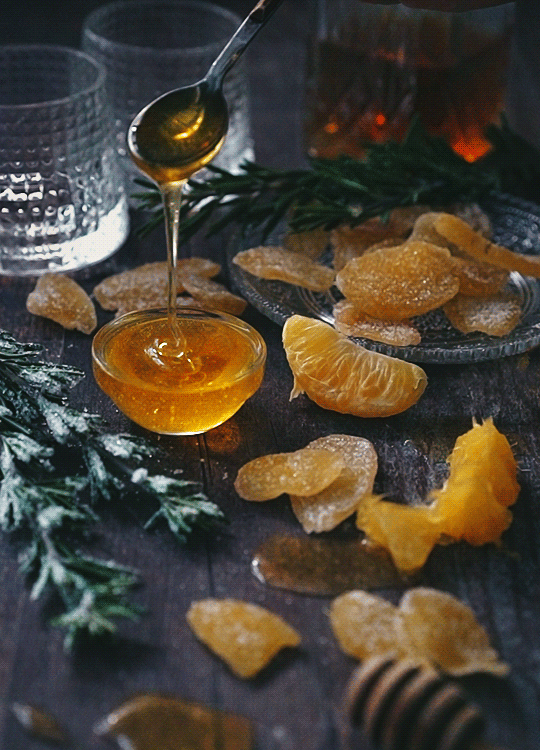
Peasants would make bread out of rye grain, that would make the bread very dark. In some communities they would make sourdough, which involves using a piece of dough you made the day before to make that day's bread.
Eggs were a source of food that was easy to come by as farmers kept chickens on hand.
Cheese and butter would be sold and used in the farm.
Jam would also be made as it was easy to preserve and sell.
Peasants would not eat much meat. Chickens made money by laying eggs, pigs could be fattened and sold for profit and cows and goats would be used for milk. By killing any of these animals for food they would loose a portion of money. Poaching (hunting on private land owned by the lord) would come with severe penalties.
Pottage and stew were a favourite of peasants as they could throw any vegetables or bit of meat or fish in a pot to cook for a few hours. It wasn't a difficult dish to make and often inexpensive.
Pies, pasties and pastries would be a favourite at inns and taverns in towns and cities most containing gravy, meat and vegetables.
With most villages and farms set close to forests, many peasants could find berries at the edge of fields. Blueberries, blackberries, raspberries would have all grown wild.
Food for Nobility & Royalty

Nobility and Royalty could always afford better food than the poor. However it might be a patch more unhealthy than the poor's fare. Nobility and Royalty weren't fans of vegetables.
The rich would eat a lot of meat, much of which they would hunt down themselves on their own land. Deer, wild boar, rabbits, turkey and other wild creatures would all be on the table.
Nobility and Royalty would be fond of fish as well. Lamprey eels was a delicacy only preserved for special occasions.
They could afford salt which was important for preserving meat and fish. This would allow the castle/manor/palace to be stocked in times of winter or famine.
They could also afford pepper and other spices, all of which could cost a fortune, to flavour their food.
During a feast, they would eat off of platters made of precious metals but only if you were seated at the high table. Other less important guests would eat off a trencher, a piece of hollowed out stale bread.
Sugar would be the height of dessert. The sugar would be shaped into fantastical formations to impress the noble guests. Tudor chefs would create edible sugar plates for Henry VIII to eat off of.
Swans and peacocks would be served in their plumage. Swans would be more royal diners as in England the monarch owns all the swans. In Ireland, it is illegal to kill a swan mainly because they could be children trapped in swan-bodies. Long story.
Feasts
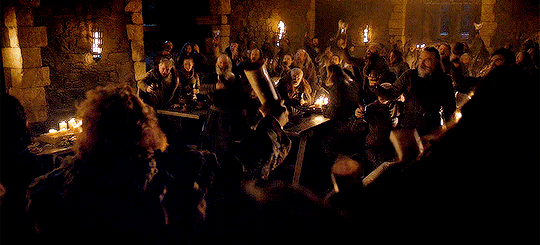
At certain events, the noble/monarch might throw a party. Most parties would begin with a dinner.
The high table would seat the family throwing the party and the honoured guests. All the food would come to them first to be distributed to their favourites. They would drink the best wine and have the finest bread.
The rest of the hall would be seated together at trestle tables, eating off trenchers. They would be sent food by the thrower of the feast on account of their personal importance or social standing. The closer you were to the salt cellar, placed at the head of the table the more important you were. The further away you were, the lower your status.
Servants called cupbearers would serve wine and drink and move about the hall to carry jugs of wine to water the guests.
Dogs would often be found in the hall, to be fed scraps by the diners.
Drink

No world or party is complete without the booze. Since much of the water in Mediaeval times was putrid or dirty, the classes would avoid it.
Beer: was both a favourite of peasants and the nobility. It would be brewed in castles or in taverns and inns, each site having a different recipe and taste. It would be stored in barrels. Beer was widely available across the world and could be brewed at home. So therefore it was inexpensive.
The two main types of beer would be:
Ale: Ale in the middle ages referred to beer brewed without hops (a kind of flowering plant that gives beer its bitter taste). It is sweeter and would typically have a fruity aftertaste.
Stout: is a darker beer sometimes brewed from roasted malt, coming in a sweet version and dry version, the most famous stout being Guinness.
Wine: Wine would be made on site of vineyards and stored in cellars of large houses or castles. They would be expensive as they would have to be imported from regions capable of growing vines.
Port: Port wine or fortified wine would be made with distilled grape spirits. It is a sweet red wine, and also would be expensive to import from the counties able to grow the correct vines.
Whiskey: is a spirit made from distilled fermented grain mash in a device called a still (which would always be made of copper). The age of whiskey is determined by the length of time it has been sitting in a cask from the time it is made to the time its put in bottles. Whiskey was a favourite drink in colder climates and could be made any where in the world.
Rum: Rum is made by fermenting and distilling sugarcane molasses/juice. It is aged in oak barrels and would have to be imported as it could only be made in lands able to grow sugarcane.
Poitín: (pronounced as pot-cheen) is made from cereals, grain, whey, sugar beet, molasses and potatoes. It is a Dangerous Drink (honestly i still don't know how I ended up in that field with a traffic cone and a Shetland pony) and technically illegal. Country folk in Ireland used to brew it in secrets in stills hidden on their land.
9K notes
·
View notes
Text
Fantasy Guide to A Monarch's Council

A Monarch will almost never be alone while ruling their kingdom. Even the most autocratic rulers will rely on councillors and advisors to get them through the day- even if the monarch does not take the advice given. For @bewareofhumanssociety
Monarch
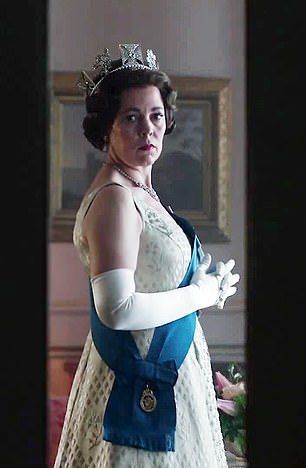
The Monarch does not have to attend the meetings but they probably should. It is here that they will hear issues facing their kingdom and opportunities on hand of its expansion/betterment. The Monarch would make decisions based on advice offered their councilors, signing official documents and speaking with their ambassadors.
Lord Chancellor/Prime Minister/Vizier
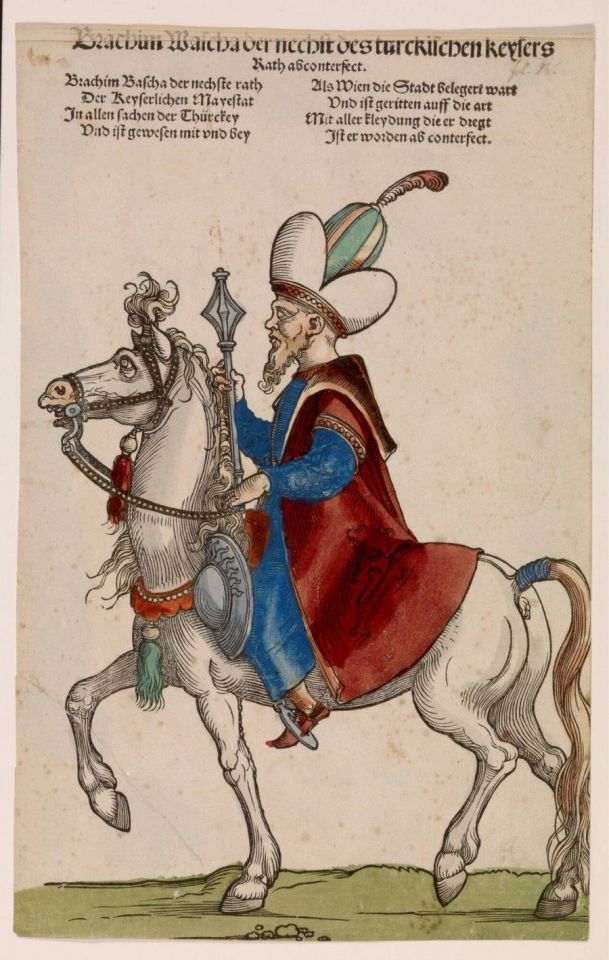
This Councillor is the second most powerful person in the Kingdom. They have possession of the Great Seal of the Realm (an ornate stamp of Office used to seal official documents) and headed the Monarch's council. They would be responsible for most of the daily running of the kingdom, sometimes the real ruler of the country. They would head the council in the monarch's absence, sometimes acting as Regent when called upon.
Comptroller of the Royal Household

This position was filled by the Monarch's Chamberlain/Steward who had the run of the royal households. They acted in concert with the monarch's other councilors to ensure the monarch's lifestyle was being maintained.
Solicitor-General

The Solicitor General is the councilor on hand to give the Monarch legal advice. The modern Solicitor General represents the monarch in court if needed and acts as a law advisor.
Treasurer
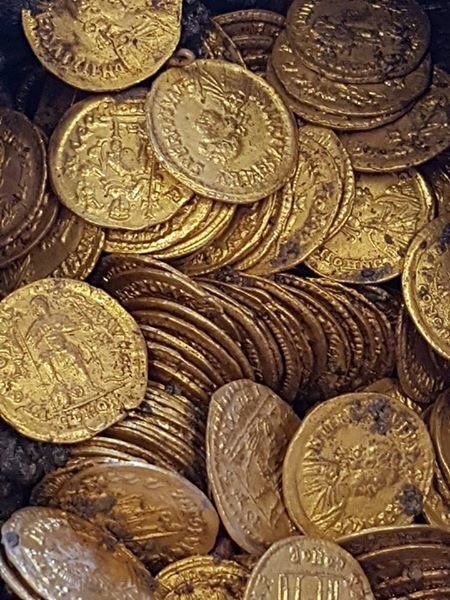
The treasurer was in charge of the finances of the realm. They would have hundreds of accountants, tax takers and businessmen at their beck and call. They would be in charge of collecting the income of the realm and putting it to good use. The treasurer is usually a powerful but unpopular position.
Lord Protector

The Lord Protector is not a permanent spot on the council, only needed when the monarch is incapacitated or too young to rule their country. The Lord Protector would take on the duties of a monarch during their tenure.
Royal Secretary

The royal Secretary is in charge of the monarch's political correspondences, keeping the council's paperwork in order and is generally tasked with communicating the monarch's choices to the other councilors.
Marshall of the Field

The Marshall of the Field is sometimes present at council meetings, most often before a warm They are given their orders from the monarch to represent their interests upon the field of battle. It was an honour almost exclusively given to nobility.
Admiral of the Royal Navy

Like the Marshall of the Field, the Admiral has charge of the operations of the monarch's fleet of ships. The Admiral would be tasked with the defense of the coast and the overall running of the kingdom's sea power.
2K notes
·
View notes
Text
Fantasy Guide to Noble Titles & What they Mean

So I get a lot of questions about what nobles actually do or how much they own or why a certain title is higher than another. Understanding the complexities of nobility and their hierarchy can be a bit of a head twister but hopefully this will help you out. Just for the moment we will be focusing on European Titles because I can't fit all the titles into one post. Forgive my shitty doodles. The diagrams mark out where the particular noble would rule.
Archduke/Archduchess

These titles have two meanings. In the latter half of the Austrian Empire, it was used to denote senior members of the Royal family such as children and siblings. It is also a non Royal title given to someone who rules an archduchy, a large portion of land with in the kingdom. They are in charge of the archduchy, ensuring it runs smoothly. They are referred to as Your Grace.
Grand Duke/Grand Duchess
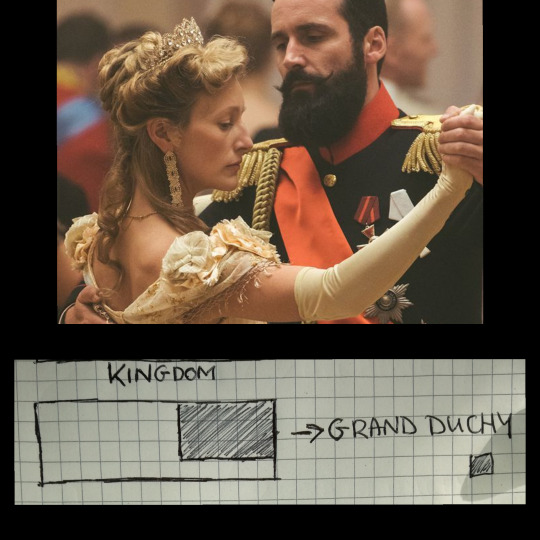
The Grand Duke is probably the trickiest of all these titles as there is a dual meaning. A Grand Duke can rule a state as a sovereign like in Luxembourg or they can rule a Grand Duchy (a large portion of land within a kingdom) like the Grand Dukes of Russia. The Grand Duke was below the Archduke and their lands may be smaller. They are in charge of ruling their Grand Duchy, upholding the monarch's laws in their name. They are referred to as Your Grace.
Duke/Duchess

The Duke is the highest rank in most European nations. The Duke rules a large portion of the kingdom- called a Duchy- which you can think of as a county/state. The Duchies are often awarded by the monarch to their children who are not the heir. The Duke is charge with running that portion of land by order of the monarch, handling the over all business of that piece of the Kingdom. Dukes are referred to as Your Grace. There was only one Duke per Duchy.
Marquess/Marchioness

A Marquess is the next rung down from Dukes. The Marquess is in charge of a portion of land within a Duchy which is called a Marsh which lays near a border. The Marquess is solely responsible for the running of that portion of land. The Marquess is called The Most Honourable (Insert name), the Marquess of XYZ. There could be multiple marquesses in a Duchy if it was near a large border.
Earl/Count/Countess/Compte/Comptesse

An Earl/Count Rules over an Earldom, which is a section of a Duchy but it has less importance than a Marsh ruled by the Marquess. The Earl/Count is the third highest ranking within the Duchy. Often it was the subsidiary title of the heir of the Dukedom, so the eldest son/daughter of the Duke would be the Earl. The Earl/Count of X is addressed as Lord X for example, the Earl of Grantham, is called Lord Grantham. There could be multiple Earls/counts per Duchy.
Viscount/Viscountess/Viscompte/Viscomptess

Viscounts are the Earl/Count's second in command, ruling a portion of land with the Earldom. They handled the judiciary matters of their lands and their barons. Viscounts were addressed as the Right Honourable (insert name) Viscount of XY. Viscounts can also be used as a subsidiary title for the son of a Earl. When Thomas Boleyn was made Earl of Wiltshire, his son George was made Viscount Rochford. There might be multiple Viscounts in a Duchy.
Baron/Baroness

The Baron is the lowest of ranks in the nobility pyramid. Before the mid-medieval period, almost all nobles were labelled as Barons. They ruled over a portion of the land under the Duke, the Earl and Viscount. There were always a huge force of barons with in the Duchy. They handled the minor local disputes of their lands, collecting taxes and monies owed. If they faced a larger issue or crime, they would pass it up to the next ranking noble the Viscount and then it could travel all the way up to the Duke. The Baron of Townville were referred to as as Lord Townville.
15K notes
·
View notes
